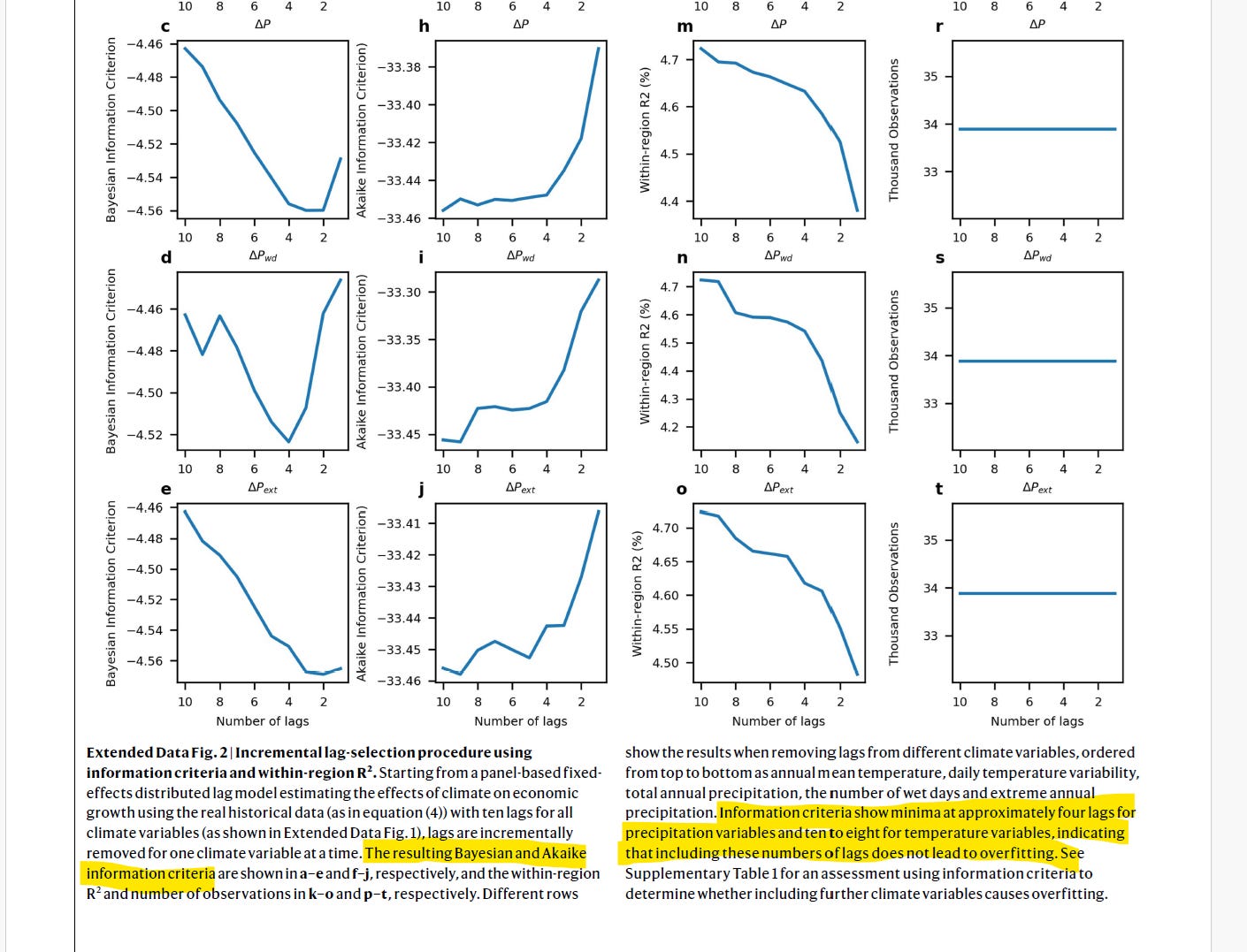Technical Note 2: Is Claude A Better Economist Than I Am?
Statistical Test Incorrectly Applied
Statistical Test Incorrectly Applied
The principal mechanism producing the startling high economic damage in the paper is the empirical finding that climate change from many years ago accumulates into loss of real income today. The authors use a standard statistical technique, the Akaike Information Criterion (AIC) and the Bayesian Information Criterion (BIC) to justify using ten years of lags for the temperature variables and four years of lags for the precipitation variables. You use the AIC and BIC by finding the number of lags in the model that produce the smallest values. The authors claim that the AIC and BIC are minimized when there are either eight, nine, or ten lags of temperature variables and four lags of temperature variables, where each lag is one year. We can see their argument in Extended Data Fig 2. from the paper.
The authors appear to have made a serious mistake. As the table below shows, re-estimating the paper’s regression model using their R code with fewer lags shows that the AIC and BIC are smallest (i.e., most negative) when there is only one temperature lag.
Using only one lag of the temperature variable makes a profound difference in the model’s estimates. If we re-simulate the paper’s statistical model using the RCP 8.5 climate scenario with one lag of the temperature variable, economic damages get to about 10% by 2100 rather than 60% as claimed in the paper.


